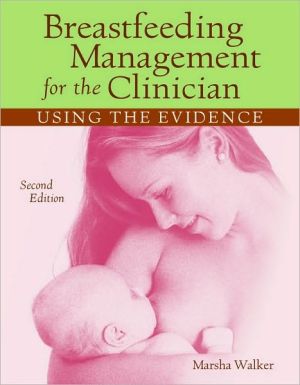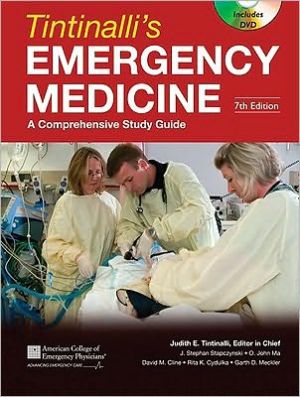Breastfeeding Management for the Clinician: Using the Evidence
Breastfeeding Management for the Clinician: Using the Evidence, Second Edition is an evidence-based guide that provides current and relevant information on breastfeeding and lactation blended with clinical suggestions for best outcomes. This essential reference includes reviews of literature, and covers the incidence, etiology, risk factors, prevention, prognosis and implications, interventions, expected outcomes, care plans, clinical algorithms, and more, providing clinicians a...
Search in google:
This must-have resource provides the newest thinking and research in a convenient evidence-based guide for managing breastfeeding and breastfeeding problems. Doody Review Services Reviewer:Robin Webb Corbett, PhD, RN C(East Carolina University)Description:This practical, how-to book on breastfeeding presents clinical interventions and the evidence to support them. Purpose:It is intended to provide current and relevant information on lactation with clinical suggestions. Evidence-based practice provides the framework for the clinical interventions. Audience:This is an informative resource for busy clinicians working with breastfeeding families in the hospital and at home. The author is the executive director for the National Alliance for Breastfeeding Advocacy Board of Directors and is well known for her work in the area of lactation. Features:This book covers the maternal anatomy and physiology of lactation, the influence of the infant's anatomy and physiology on breastfeeding, and the biospecificity of breast milk. Other topics include the challenges of the initial 24 to 48 hours following birth as well as later, and other issues influencing the breastfeeding maternal-infant dyad. The book also discusses infants with anomalies or physical conditions that may affect breastfeeding, the physically challenged mother, and common problems. Strengths of this book include the approach to the challenge, the clinical intervention, and the evidence supporting that intervention. Additional illustrations would enhance the presentation.Assessment:This is an excellent resource for healthcare providers who want to provide evidence-based clinical interventions for the lactating family in the hospital and the community. Tools such as Latch Assessment Documentation and Breastfeeding Assessment, along with other breastfeeding tools, are valuable instruments to strengthen and individualize care of these families.
1Influence of the biospecificity of human milk12Influence of the maternal anatomy and physiology on lactation513Influence of the infant's anatomy and physiology914Influence of peripartum factors, birthing practices, and early caretaking behaviors1375The first 24-48 hours : common challenges1836Beyond the initial 48-72 hours : infant challenges2497Physical, medical, and environmental-related problems and issues3018Maternal pathology : breast and nipple issues3659Physical, medical, emotional, and environmental challenges to the breastfeeding mother411
\ From The CriticsReviewer: Robin Webb Corbett, PhD, RN C(East Carolina University)\ Description: This practical, how-to book on breastfeeding presents clinical interventions and the evidence to support them. \ Purpose: It is intended to provide current and relevant information on lactation with clinical suggestions. Evidence-based practice provides the framework for the clinical interventions. \ Audience: This is an informative resource for busy clinicians working with breastfeeding families in the hospital and at home. The author is the executive director for the National Alliance for Breastfeeding Advocacy Board of Directors and is well known for her work in the area of lactation. \ Features: This book covers the maternal anatomy and physiology of lactation, the influence of the infant's anatomy and physiology on breastfeeding, and the biospecificity of breast milk. Other topics include the challenges of the initial 24 to 48 hours following birth as well as later, and other issues influencing the breastfeeding maternal-infant dyad. The book also discusses infants with anomalies or physical conditions that may affect breastfeeding, the physically challenged mother, and common problems. Strengths of this book include the approach to the challenge, the clinical intervention, and the evidence supporting that intervention. Additional illustrations would enhance the presentation.\ Assessment: This is an excellent resource for healthcare providers who want to provide evidence-based clinical interventions for the lactating family in the hospital and the community. Tools such as Latch Assessment Documentation and Breastfeeding Assessment, along with other breastfeeding tools, are valuable instruments to strengthen and individualize care of these families.\ \ \ \ \ From The CriticsReviewer: Robin Webb Corbett, PhD, RN C(East Carolina University) \ Description: This practical, how-to book on breastfeeding presents clinical interventions and the evidence to support them. \ Purpose: It is intended to provide current and relevant information on lactation with clinical suggestions. Evidence-based practice provides the framework for the clinical interventions. \ Audience: This is an informative resource for busy clinicians working with breastfeeding families in the hospital and at home. The author is the executive director for the National Alliance for Breastfeeding Advocacy Board of Directors and is well known for her work in the area of lactation. \ Features: This book covers the maternal anatomy and physiology of lactation, the influence of the infant's anatomy and physiology on breastfeeding, and the biospecificity of breast milk. Other topics include the challenges of the initial 24 to 48 hours following birth as well as later, and other issues influencing the breastfeeding maternal-infant dyad. The book also discusses infants with anomalies or physical conditions that may affect breastfeeding, the physically challenged mother, and common problems. Strengths of this book include the approach to the challenge, the clinical intervention, and the evidence supporting that intervention. Additional illustrations would enhance the presentation.\ Assessment: This is an excellent resource for healthcare providers who want to provide evidence-based clinical interventions for the lactating family in the hospital and the community. Tools such as Latch Assessment Documentation and Breastfeeding Assessment, along with other breastfeeding tools, are valuable instruments to strengthen and individualize care of these families.\ \








